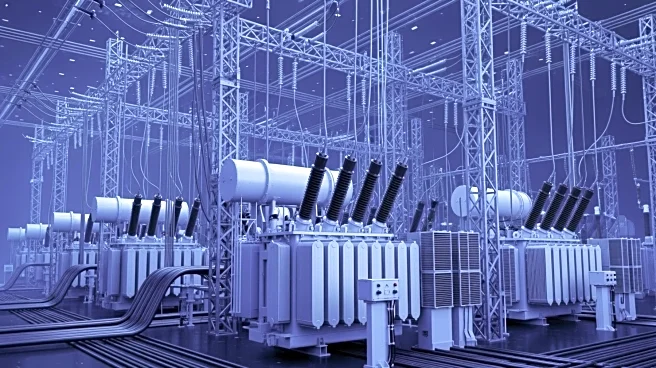What's Happening?
The Trump administration is taking steps to expedite the connection of new data centers to U.S. power grids, aiming to support the growth of AI and cloud computing. Energy Secretary Chris Wright has proposed
a rule to the Federal Energy Regulatory Commission to complete grid connection reviews within 60 days, significantly faster than the current process. This initiative targets large AI and cloud data centers, which require reliable and low-cost power. The proposal includes measures to prevent grid overload during peak demand by encouraging on-site generation and reduced usage. The move follows challenges faced by companies like Talen Energy Corp. in securing dedicated power sources for data centers.
Why It's Important?
The proposal is expected to boost the energy sector, with shares of companies like Constellation Energy Corp. and Vistra Corp. rising following the announcement. The faster approval process could benefit energy suppliers and equipment manufacturers, potentially increasing demand for gas turbines and electrical hardware. However, concerns remain about higher power costs and emissions from AI-driven facilities. The federal proposal could shift energy approval power to Washington, which may face resistance from states. The initiative reflects the administration's focus on supporting technological growth and addressing infrastructure challenges.
What's Next?
The Federal Energy Regulatory Commission will review the proposal, with hopes for final approval by April 2026. The administration's plan could face opposition from state regulators and environmental groups concerned about the impact on power costs and emissions. The outcome of this proposal could influence the future of energy infrastructure and the growth of AI and cloud computing industries. Stakeholders will need to navigate regulatory challenges and address environmental concerns as the proposal progresses.
Beyond the Headlines
The proposal highlights the intersection of technology and energy policy, with potential implications for environmental regulations and state-federal dynamics. The initiative could drive innovation in energy infrastructure, but also raises ethical questions about balancing technological advancement with environmental sustainability. The long-term impact on energy markets and regulatory frameworks will depend on how these challenges are addressed.












